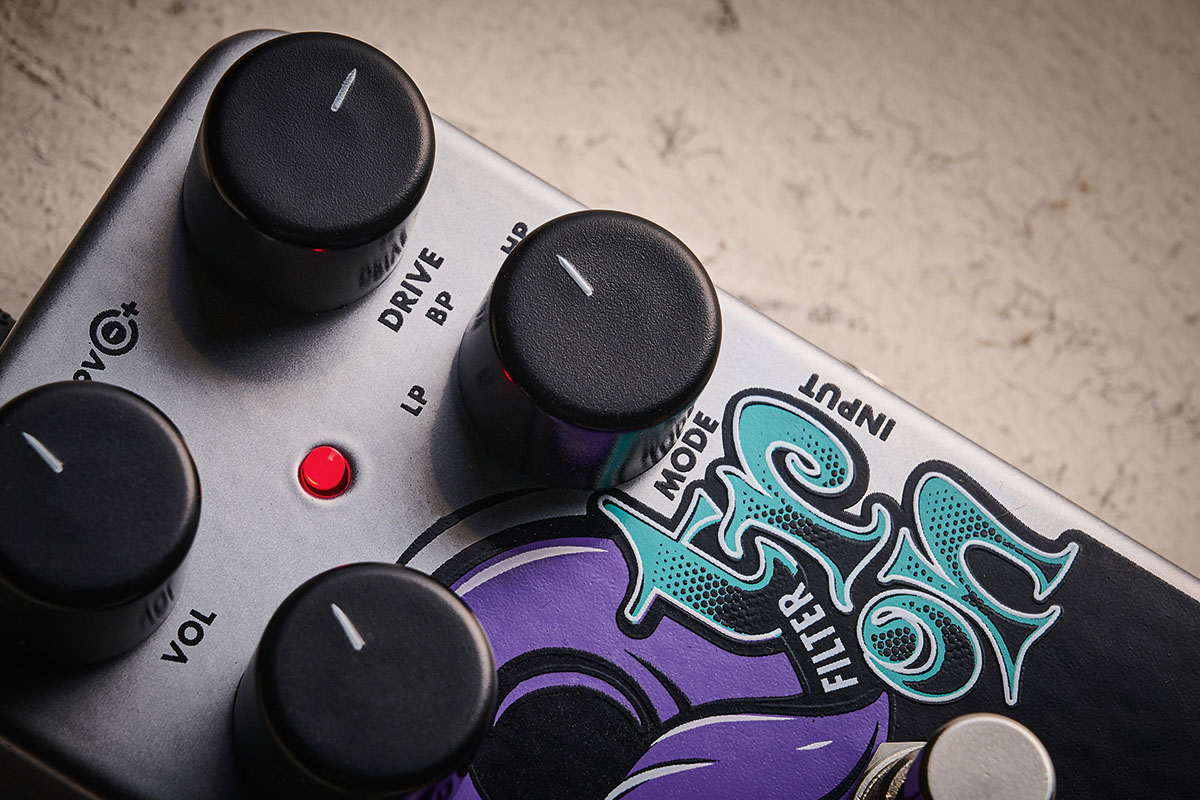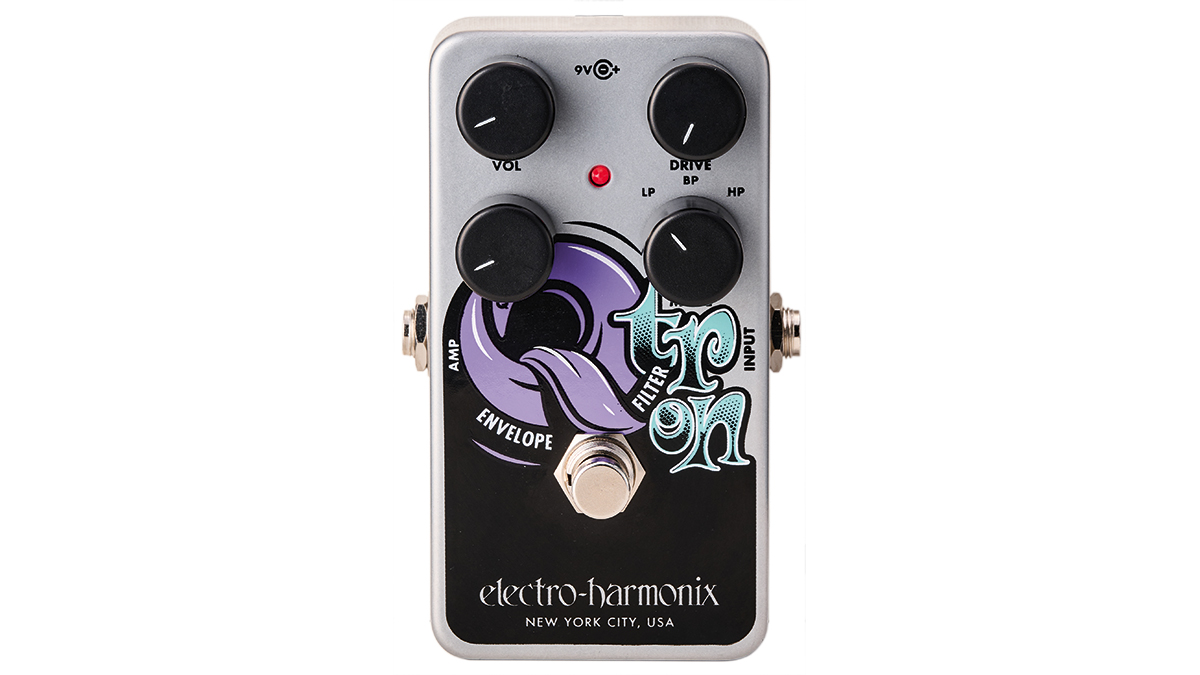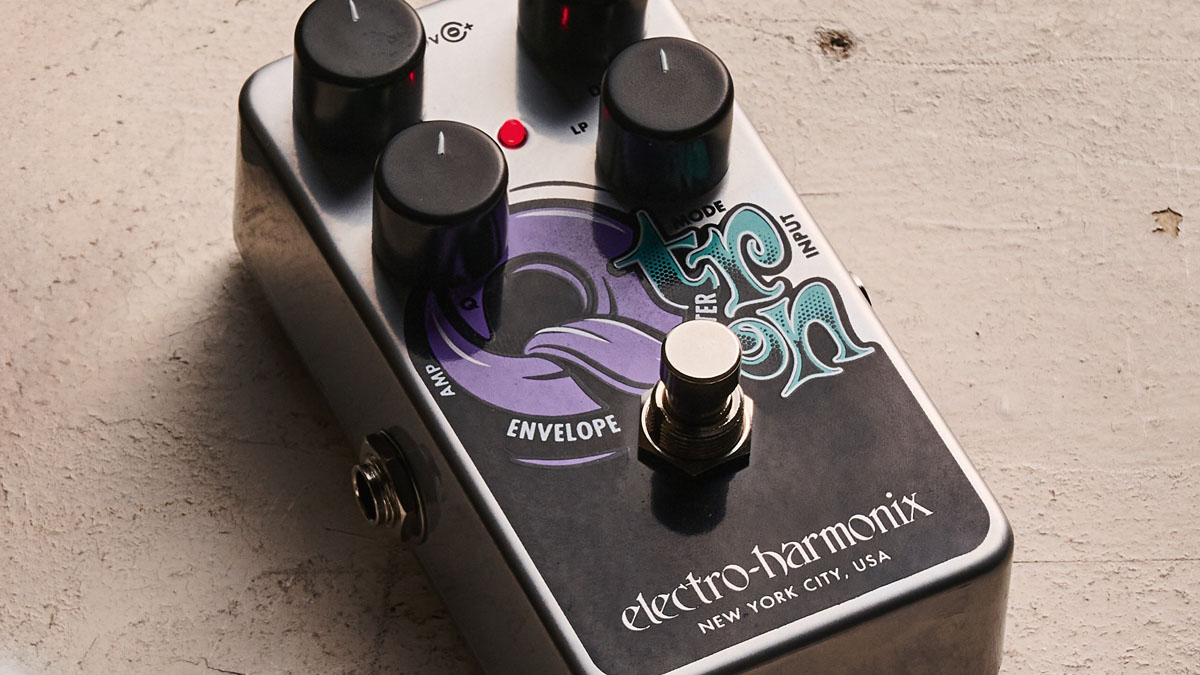Guitar World Verdict
The Nano Q-Tron provides control over a wide palette of auto-wah and quacky filter sounds.
Pros
- +
Plenty of control over the sound.
- +
Smaller size means more on the 'board.
- +
Solid build.
- +
Reasonably priced.
Cons
- -
Lacks some features from its bigger brother.
- -
A little niche for some players.
You can trust Guitar World
The Q-Tron has quite a pedigree. The original 1996 EHX version was designed by Mike Beigel, the designer of the lauded Mu-Tron III, and was pretty much regarded as its successor at that time, while the Q-Tron Plus went on to become John Mayer’s filter of choice. That basic DNA lives on in the Nano version.
Although it lacks the effects loop and the extended parameter control of the current Q-Tron Plus, this smaller version still offers the essence of the envelope-controlled filter sound.
This is all about modulating your electric guitar’s tone via playing dynamics – the loudness of the signal forming a volume envelope that sweeps the cut-off, or centre frequency of a filter creating wah effects or the sound of a synth filter-sweep. Here, the filter sweeps to a higher frequency then descends (the Q-Tron Plus has a switch that allows you to change the sweep to the opposite direction).

There are three selectable frequency ranges emphasising different parts of the spectrum, and the sensitivity to your playing is set by the Drive knob, which really starts to have an effect in normal dynamic playing beyond 12 o’clock where you can dial in the wider, more prominent filter sweeps – you’ll find a sweet spot that matches your own picking strengths to the required sound.
The Q knob takes care of further refinement of the sweep, adjusting the filter’s bandwidth. Turn this clockwise for intensity and a more resonant sweep.
Specs

- PRICE: $111 / £98
- ORIGIN: USA
- TYPE: Envelope filter
- FEATURES: True bypass
- CONTROLS: Volume, Drive, Q, Mode (LP/BP/HP), Bypass footswitch
- CONNECTIONS: Standard input, standard output
- POWER: 9V battery or 9V DC adaptor (not supplied) 10mA
- DIMENSIONS: 70 (w) x 111 (d) x 50mm (h)
- CONTACT: Electro-Harmonix
All the latest guitar news, interviews, lessons, reviews, deals and more, direct to your inbox!
Trevor Curwen has played guitar for several decades – he's also mimed it on the UK's Top of the Pops. Much of his working life, though, has been spent behind the mixing desk, during which time he has built up a solid collection of the guitars, amps and pedals needed to cover just about any studio session. He writes pedal reviews for Guitarist and has contributed to Total Guitar, MusicRadar and Future Music among others.


